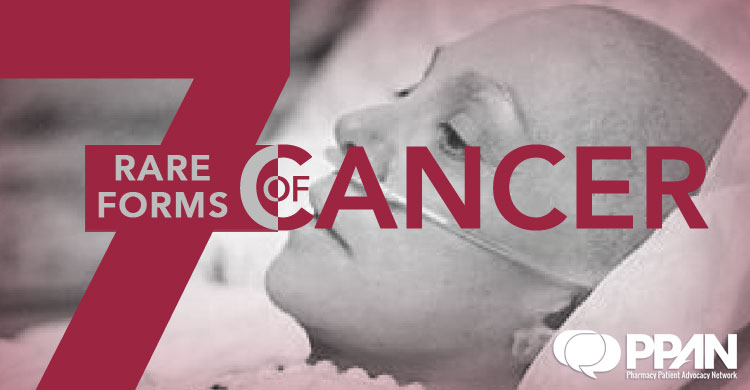7 Rare Forms of Cancer
Any form of cancer is a proliferation of malformed cells. In cases where the cancer is benign, the improperly replicating cells attend to be contained to specific areas, and have not broken off to spread through the bloodstream. In malignant cancers, the growth is so uncontrolled that actually impact the DNA replication in surrounding cells, and thus impacts the entire body.
While this basic process is common in any type of cancer, rare forms are classified as such either because they are infrequently expressed in the population, or because they present in an area that does not tend to be prone to malignant growths. Although genetic factors can cause DNA to signal malignant replications, other triggers from environmental toxins or lifestyle factors can also contribute to the expression of the disease. Thus, some rare forms of cancer are also based on the lack of prevalence in causative factors.
1. Carcinomas of Glandular Organs
These can include cancers such as mesothelioma, which directly impact tissue lining and mucosal surfaces. However, carcinomas of glandular organs can also include tumors within the adrenal glands, thyroid, and other endocrine system components without being immediately symptomatic or diagnosed. This is especially true for adrenal carcinomas, which can mimic other endocrine malfunctions. While adrenal carcinomas are not common, they can become malignant and rapidly metastasize, which makes it important to stay aware of changes in energy levels as well as the presence of a low grade fever, as these can indicate the greater problem of cancer.
2. Sarcomas
This type of cancer is far less common than any carcinoma, and tends to be more prevalent in youth populations. While carcinomas tend to infiltrate the body in a tendril-like fashion of expansion, sarcomas are localized tumors that appear within the flesh of the muscle. As a result, they may appear as a hard lump below the surface of the skin, with no other immediate sign of symptoms. However, the size and location of sarcomas in the fleshy tissue can lead to eventual hemorrhage and necrosis of the surrounding tissue, while metastasis throughout the body is facilitated by the close proximity of major blood vessels.
3. Fibrosarcomas
These malignant growths form along the fascia and can also result in significant tumors in the joints and connective tissue. The high rate of replication for collagen cells also means that this is a fast spreading form of cancer, and metastasis is likely from the onset of the malignant growth. These types of tumors may be felt below the surface of the skin around major joints, but may also exhibit as:
- Obstructions to joint movement
- Severe pain and pressure in the limbs
- Weakness in the muscles and unsteadiness in posture
As fibrosarcomas are both rare are quick to spread, it can be important to have any concerns over the above symptoms evaluated with speed.
4. Osteocalstomas
These malignancies are actually cancerous growths of the bone. Unlike leukemia, which impacts the bone marrow, osteoclastomas are uncontrolled cell replication of the actual hard tissue. This type of cancer is sometimes associated with Paget’s disease in elder populations, although this form of cancer is more common in young adults. The majority of osteoclastomas do tend to be benign, but surgery is necessary to shave down the tumerous section of bone. Symptomatically, this type of cancer can be felt as a calcified spiny protrusion from the bone, and pain that is associated with the pressure will also tend to be present.
5. Liposarcoma
This very rare form of cancer is actually a malignancy that develops in adipose tissue. This can occur when fat cells harden and begin to replicate in order to accommodate more lipids. However, the cause of liposarcoma can also come from rancid fats that are ingested and then oxidize the cells of the adipose tissue as it is being processed. As a result, liposarcomas can also be difficult to detect, since they are not directly connected to any organ system or structural component of the body. These do tend to be slow growing cancers, and while they are not often malignant, they can generally be removed and treated before they metastasize.
6. Myosarcomas
This type of cancer expresses in two very specific ways, but is also an exceedingly rare occurrence of soft tissue malignancies. Both leiomyosarcoma and rhabdomyosarcoma specifically generate tumors in the female reproductive system and some proximal organs. Leiomyosarcoma is more likely in women who have gone through puberty, and can present as a growth on the outside of the uterus wall and even the outer lining of the stomach. Rhabdomyosarcoma has only been seen in pre-adolescent girls, but is still a rare occurrence. The cancer presents as polyps that invade the vagina, uterus, and even bladder. Both forms of myosarcoma can present symptoms including:
- Pelvic pain and inflammation
- Pressure in the abdomen
- Abnormal bleeding
- Trouble with urination, including increasing urges and lack of ability to vacate
This polyp cancer tends to be benign and can be surgically removed, although a predisposition to myosarcomas also makes it likely that new tumors will re-appear.
7. Teratoma
This is perhaps the most rare and fascinating form of cancer, that can also have a variety of health implications. Essentially, a teratoma is a tumor that is formed from mixed malignant cell growth that has actually differentiated into specific tissue systems. As a result, individuals who have a teratoma removed may find that it contains hair, skin, teeth, and other body formations. Although there is thought to be a strong genetic correlation with the development of teratomas, distinctions are made between cases where an individual was born with the cancerous growth, and cases where the teratoma has developed over time as any other tumor.
The differentiation of malignant cells that occurs in this type of cancer can make it extremely dangerous, since metastasis is highly likely at an early stage. Further, chemotherapy and radiation is not always effective on this form of cancer, due to the similarity of differentiated malignant cells to healthy ones, and surgery is often the only option.





